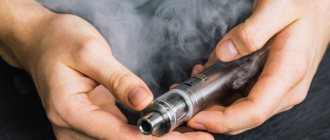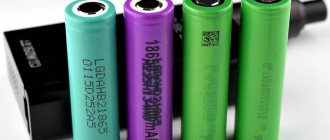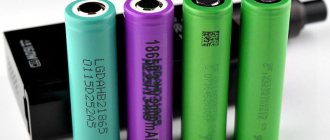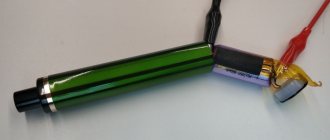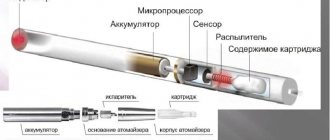What tastes better - hookah or vape? What is more harmful - hookah or cigarettes? Is it true that 1 hookah is equal in strength to 100 cigarettes? Or maybe 1000 cigarettes? The discussion around this topic has grown so much that at times it looks more like a symbiosis of a consultation of doctors and a rap battle. Let’s look into this issue, weigh the pros and cons and draw our own conclusions.
Criteria for evaluation:
- Chemical composition;
- Psychological dependence;
- Risk of disease.
So, the volumes of smoke (or is it steam?)
When smoking cigarettes, the smoker inhales the smoke generated during the process of pyrolysis, that is, combustion. When smoking a hookah, the process occurs differently: aromatic smoke, which is actually more of a vapor, is formed due to the evaporation of nicotine, glycerin and flavorings.
Have you noticed what tobacco looks like in a hookah flask after smoking? It looks like a dense, dried-out lump of tobacco left after the moisture has evaporated. And not at all like the ash left from cigarettes.
There is a statement that in one session, a hookah smoker passes through the lungs 100-200 times more smoke than when smoking one cigarette. But! The volume of smoke is not an indicator of its toxicity, because hookah smoke-vapor consists primarily of water, and its formation temperature is hundreds of degrees lower than that of cigarettes.
Moreover, during the combustion of tobacco, about 4,700 chemical compounds are released, 60 of which are human carcinogens (while in hookah vapor the number of chemical compounds is 142 components). Among those dangerous to the human body are nicotine, carbon monoxide (carbon monoxide), tars, salts of heavy metals and other residual substances.
What is vape
A vape is an electronic device in which vapor is produced when a flavored liquid is heated. When it evaporates, it resembles tobacco smoke, but does not have an unpleasant odor. Vape liquid often does not contain nicotine, or the substance is contained in a reduced concentration.
Vaping device.
Fans of electronic cigarettes call inhaling vapor vaping or vaping, denying any similarity of this process with smoking tobacco.
What is the difference between vaping and smoking:
- cold vapor when vaping does not burn the throat or lungs, does not have a bitter taste or pungent odor;
- burning tobacco in cigarettes leaves ash and soot, which over time accumulate on the body, clothes and objects around;
- vape liquid does not contain toxic resins, poisons, or heavy metal salts that enter the body during traditional smoking and gradually poison it;
- the amount of nicotine in the composition varies and is reflected in the cartridge labeling; there are completely nicotine-free formulations for e-cigarettes;
- skin, nails, teeth and oral cavity do not suffer when vaping.
Chemical composition of tobacco
About nicotine
Since tobacco is used in both cigarettes and hookahs, nicotine is inevitably inhaled in both cases (except, of course, for the use of nicotine-free hookah mixtures).
However, there is less nicotine in hookah tobacco than in cigarette tobacco: the share of nicotine in hookah tobacco, as a rule, does not exceed 1% (and most often it is 0.5-06%), while in cigarettes this figure can reach 3% , and 0.6% is the minimum threshold.
Non-nicotine
mixtures do not contain tobacco at all, and, as the name suggests, no nicotine.
About carbon monoxide
Carbon monoxide or carbon dioxide (also known as carbon monoxide CO) is dangerous because it easily combines with hemoglobin and directly affects the functioning of the cardiovascular and respiratory systems, lowering the level of oxygen in the blood. Carbon monoxide is released in both cases - when smoking both cigarettes and hookah. Moreover, the numbers in the second case, at first glance, even seem somewhat frightening:
1 liter of hookah smoke contains 1.79 mg of carbon monoxide. Assuming 100 puffs are taken in one hour-long session, the final “total” will be 179 mg of CO2. To achieve such “results” alone, you need to take one and a half deep puffs per minute!
As a rule, a hookah is smoked in a group, during a leisurely conversation, which obviously does not contribute to the establishment of such “records.”
By the way, the amount of carbon monoxide inhaled when smoking 1 cigarette is 11.66 mg. Now calculate for yourself how much carbon monoxide a smoker will get if he smokes 100 cigarettes on his own.
For reference: death from carbon dioxide poisoning is possible with inhalation of 2300 mg (equivalent to approximately 20 cigarettes).
Toxic substances and heavy metal salts
Both hookah smoke and cigarette smoke contain toxic substances and heavy metal salts. However, their ratio is clearly in favor of hookahs. And the point here is not only in quantitative superiority (remember, 4700 versus 142?), but also in the danger of compounds that increase during combustion: isoprene, which causes nausea and dizziness, damages the kidneys, cadmium, carcinogens tar, nitrosodimethylamine and acetaldehyde, poisonous ammonia, which affects the head brain and central nervous system, deadly arsenic, toxic nitromethane...
In addition, when burning, they also enter into active interaction, enhancing their effect on the human body.
Harm of an electronic cigarette
This device has come into fashion relatively recently. And it has already acquired many supporters and opponents. However, there is no point in disputing the harm of such a device; it is best to take a closer look at the possible damage from its use.
- Despite assurances from manufacturers that there is no nicotine in electronic devices, consumers have long known that it is there, albeit in smaller quantities . However, this hinders those who want to replace such a fashionable cigarette with a regular one, since it does not bring the long-awaited result, because the addiction was and remains.
- The nicotine contained in such a device also affects the human body, causing it various health problems . First of all, it has a detrimental effect on the human nervous system.
- Flavorings , various flavor enhancers and the already mentioned nicotine have a negative effect on the cardiovascular function of the body.
- There is a risk of cancer.
- The risk of lung and respiratory tract diseases increases.
- The mixture contained in this electronic device enters the human body not through smoke, but through steam . Thus, all negative substances poison the smoker much faster.
- Carcinogenic elements that are released during the operation of the device also have a negative effect on the human body.
And as for hookah tobaccos - what is included in their composition?
Hookah tobacco, in addition to the actual tobacco leaves, also contains the following components:
- Marinade or molasses (sugar syrup soaked into tobacco leaves);
- Glycerin, which provides “smokiness”;
- Flavorings, thanks to which there is such a variety of tastes;
- Preservatives that ensure freshness and proper storage of moist tobacco.
Opponents of hookahs pay attention to glycerin - considering this element dangerous.
How can it harm?
Is glycerin in hookah tobacco harmful?
Glycerin vapor particles make up the bulk of hookah smoke. Glycerin is a simple trihydric alcohol of a viscous-liquid consistency, actively used in various industrial fields, including in medicine. This is a globally approved substance that you can buy at any pharmacy without a prescription.
How can it be dangerous when smoking a hookah?
Actually, nothing.
The evaporation temperature of glycerin is 100°C, the boiling point is 290°C. The poisonous gas acrolein (by the way, also present in cigarette smoke) can only be formed by prolonged boiling of glycerin and in the presence of catalysts. However, as soon as the temperature in a hookah cup rises above 150°C, burning sugar in molasses gives the tobacco an unpleasant taste.
So, in order to suffer from glycerin in hookah smoke, you will have to try hard and endure the disgusting bitterness for some time.
Water filtration vs mechanical filters
A water filter is an absolute advantage of a hookah: passing through water in a flask, the smoke is cleared of acrolein and acetaldehyde, the amount of nicotine and phenols is reduced (up to 90%), and the amount of small solid particles is also reduced by half.
Cigarettes also use filters (carbon or mechanical), but they rather prevent physical penetration. The filter, like cigarettes, contains harmful substances to a much lesser extent; in addition, under the influence of high temperatures, new chemical compounds related to carcinogens appear.
To be fair, it is worth noting that cooled smoke penetrates deeper into the lungs, not only into the upper lobes, but also into the middle and lower lobes. If you abuse hookah, this can serve as an additional cause for concern.
The water filter doesn't actually filter.
Hookah lovers claim that hookah smoke is softer than cigarette smoke because water filters out particles that irritate the throat. In fact, the main task of the water in the flask is simply to cool the smoke to a comfortable temperature for inhalation. And the feeling of a “softer” smoke that does not irritate the throat occurs due to its high humidity after passing through water.
The “water filter” is capable of filtering out less than 5% of nicotine. And most components of tobacco smoke do not dissolve in water at all. Doctors say that smoking a hookah is no less harmful to health than smoking regular cigarettes.
And now - to vapes. No tobacco - no problem?
Vape, also known as an electronic cigarette, began its journey as an actively advertised “healthy” alternative to smoking regular cigarettes. After the adoption of the anti-tobacco law in Russia in 2013, the popularity of vaping reached a new level. But now the Ministry of Health is already openly declaring the dangers of vaping, and officials have equated electronic and regular cigarettes in the face of the Law.
So you can't smoke a vape in public places.
But it is possible in specially designated places. And therefore it’s time to discuss - is it worth it?
Despite loud statements (this is the official name of the vape - ENDS) there is “pure water vapor”, WHO denies this.
In addition to the nicotine we are already familiar with, “pure vapor” can contain substances such as propylene glycol and formaldehyde.
Propylene glycol released when the mixture is heated can cause irritation of the upper respiratory tract and persistent allergic reactions. Formaldehyde is included in the list of carcinogens, and even occasional inhalation can lead to irritation of the mucous membranes and skin.
But this potential danger cannot be compared with all the above-mentioned consequences of smoking cigarettes.
Vape culture
A vape as a vaping device has many advantages over a hookah. From the obvious:
— Autonomy;
— Compactness;
- Modernity, or something.
Yes and much more. It is very convenient to fill the tank and vape somewhere on the street, during a break at the university, while walking, etc. Young (mostly) community, large selection of liquids, devices and other cool things.
The amount of steam, as well as the taste transfer, is affected by the design of your device, winding, and much more. This is quite unusual, especially when compared with the hookah culture. But vaping also has its drawbacks:
— The battery will eventually run out;
— You often have to choose between the amount of smoke and the taste;
— The vaping culture experienced the peak of its popularity, suddenly losing ground.
Many people choose vaping as an alternative to smoking cigarettes, hoping to get rid of the bad habit. However, liquids with nicotine do not allow this to happen. And nicotine-free e-liquids do not contain the most beneficial substances.
As for me, the vaping industry is an interesting, modern trend, which at one time became mainstream, crossed the apogee of popularity and disappeared from the spotlight. Yes, a certain number of people are still interested in vaping, and perhaps the vaping culture is just beginning to develop.
Is hookah addictive?
Research conducted in Lebanon showed that among people who smoke hookah up to 3 times a week, only 10% of people have a nicotine addiction. Among those who smoke hookah every day, 40% are nicotine addicts.
The same numbers are relevant for those who like to vape. But, obviously, a hookah cannot be called a portable device, and smoking here is more of a ritual than a habit. So in the case of vapes, it is much easier to become addicted.
From this it follows that if you follow the measures, it is quite difficult to become dependent on hookah. Another thing is psychological dependence, but there are no uniform norms here, because the paths of development of such dependence are very unpredictable, and can affect a variety of addictions - from pear caramel to even numbers of trams.
Is it possible to quit smoking with a vape or hookah?
You can quit smoking with the help of willpower. Vape or hookah here can only have a placebo effect. This is evidenced by the results of a study published in 2014 in the journal JAMA Internal Medicine: there is no noticeable effect from such a replacement, and even after a year, the nicotine thirst of heavy smokers makes itself felt, and many of them returned from e-cigarettes to regular ones .
To be fair, we cannot fail to mention the potential dangers that hookah smoking brings.
What is more harmful: vape or hookah?
Everyone has long known about the dangers of tobacco products to human health. Vape and hookah can become a worthy alternative to smoking for many users. To figure out what is more harmful than a vape or a hookah, let's look at their similarities and differences, as well as the principle of operation and the composition of the refill.
The main difference between a vape and a hookah is the way it works. The vape operates from a power source and generates vapor by heating the coil. The gadget is filled with vape juice, which consists of the following components:
- Glycerin is a colorless liquid that is used in the pharmaceutical, cosmetic and food industries. Responsible for steam formation.
- Propylene glycol is safe for humans. Used in the production of cosmetics and the food industry. Reduces slurry viscosity.
- Flavorings – food flavors are usually used in the production of quality products.
- Nicotine is the most dangerous component that can be addictive. Vape uses special medical nicotine, which is purer than tobacco.
Conclusion: while vaping, the vaper inhales vapor of glycerin, propylene glycol and flavoring. If you follow certain limits and do not overdo it with dosages, and also use e-liquid without nicotine, the harm of vaping can be minimized.
Unlike an electronic cigarette, a hookah operates without a battery. You only need special coal and a filling mixture (hookah tobacco). Also, liquid is used to cool and soften the smoke - this can be water, milk, juice and even wine.
With the composition of tobacco dressing for a hookah, everything is much more complicated. It is sometimes difficult to determine exactly. Usually it contains:
- tobacco;
- molasses or honey to provide a viscous consistency;
- glycerol;
- flavorings;
- preservatives.
When smoking a hookah, you inhale smoke, cooled and moistened, which has the peculiarity that it does not irritate the respiratory system, but at the same time it settles deeply in the lungs and lower sections of the bronchi.
There is a myth that the liquid that is added to the hookah serves as a filter and removes all harmful substances from the smoke. But this is not so, the cleaning is quite weak. even worse than in a cigarette filter. Along with the smoke, the smoker inhales:
- toxic substances;
- combustion products;
- harmful resins and carcinogens;
Conclusion: hookah is harmful to the human body:
- The composition of the dressing is not always clear; it may contain dangerous additives.
- The smoking ceremony lasts quite a long time (about 1 hour), and smokers receive a dose of harmful substances comparable to smoking about 50 cigarettes.
- May have a detrimental effect on the respiratory system, heart, stomach, and brain.
- People often smoke hookahs in groups, passing the mouthpiece to each other. This is unhygienic and can cause various infectious diseases.
End of article
Who shouldn't smoke hookah?
- People who are genetically predisposed to cancer - especially when it comes to cancer of the larynx, esophagus, lungs, bronchi, and oral cavity;
- The issue of hygiene: there is an opinion that microorganisms responsible for the development of diseases such as tuberculosis and hepatitis A can accumulate and multiply in the flask. We do not exclude the possibility that there are unscrupulous hookah operators who do not care about proper cleaning of their equipment, but with us you have nothing to fear — we thoroughly disinfect the flasks and use only disposable hypoallergenic mouthpieces;
- For people prone to psychological dependence and who do not know the limits: remember that all excesses are harmful, and even from a large number of apples you can be overtaken by heartburn, as Shakespeare said: so sweet is honey that, in the end, it is also vile - so observe in moderation, friends!



